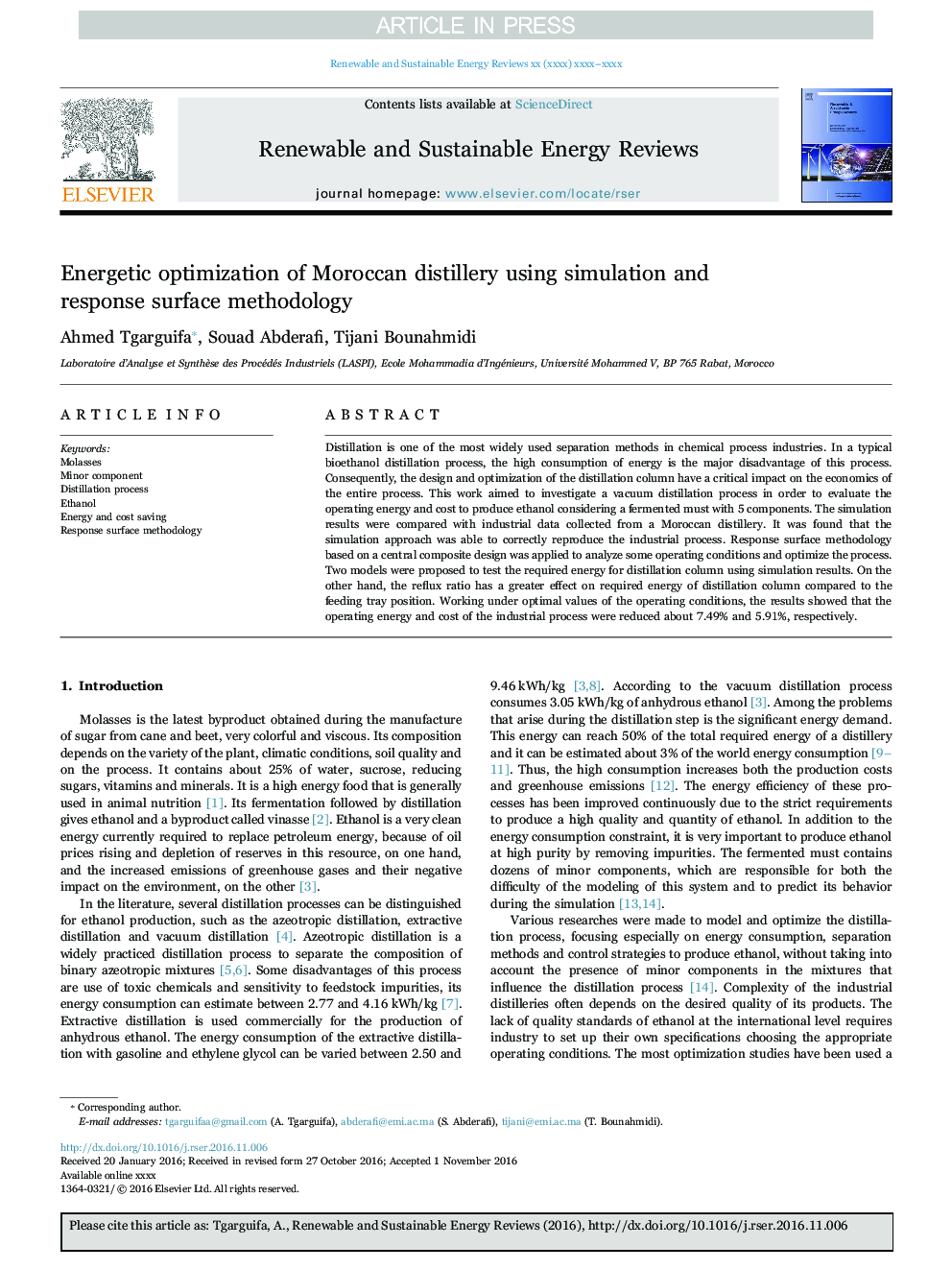| Article ID | Journal | Published Year | Pages | File Type |
|---|---|---|---|---|
| 5482849 | Renewable and Sustainable Energy Reviews | 2017 | 11 Pages |
Abstract
Distillation is one of the most widely used separation methods in chemical process industries. In a typical bioethanol distillation process, the high consumption of energy is the major disadvantage of this process. Consequently, the design and optimization of the distillation column have a critical impact on the economics of the entire process. This work aimed to investigate a vacuum distillation process in order to evaluate the operating energy and cost to produce ethanol considering a fermented must with 5 components. The simulation results were compared with industrial data collected from a Moroccan distillery. It was found that the simulation approach was able to correctly reproduce the industrial process. Response surface methodology based on a central composite design was applied to analyze some operating conditions and optimize the process. Two models were proposed to test the required energy for distillation column using simulation results. On the other hand, the reflux ratio has a greater effect on required energy of distillation column compared to the feeding tray position. Working under optimal values of the operating conditions, the results showed that the operating energy and cost of the industrial process were reduced about 7.49% and 5.91%, respectively.
Related Topics
Physical Sciences and Engineering
Energy
Renewable Energy, Sustainability and the Environment
Authors
Ahmed Tgarguifa, Souad Abderafi, Tijani Bounahmidi,
